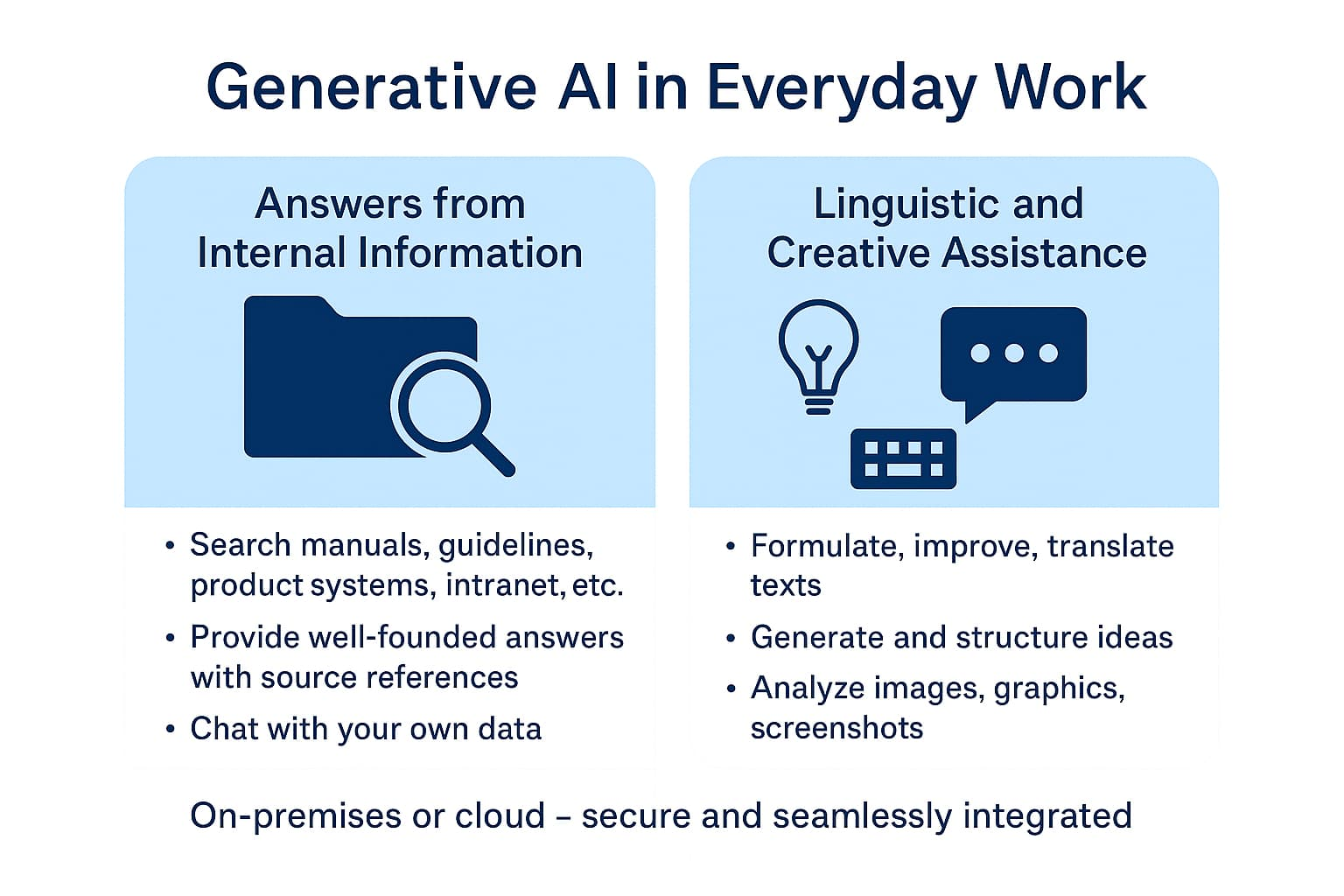
15.07.2025 | Blog How can generative AI ease the workload in everyday office life?
Generative AI offers a wide range of possibilities to simplify daily work processes. Understanding complex content quickly, drafting professional texts, translating, or providing well-founded answers based on internal knowledge are just a few examples. One thing is especially important: having the right support for each use case – without the diversions via various individual solutions or costly in-house developments by the IT department.
Generative AI in the workplace: Two use cases, one goal – increased productivity
In both corporate and public sector contexts, two primary use cases for generative AI are emerging:
1. Reliable answers and summaries based on internal data
Many workplace tasks require knowledge that already exists – in manuals, policies, contracts, project files, ticketing systems, or the intranet. This is where a major potential lies: instead of clicking through numerous documents, employees can simply ask a question and receive a well-founded, traceable answer based on internal content.
This not only saves time but also increases reliability – the answer is based on real documents, is verifiable, and includes references. Fields such as customer service, knowledge management, compliance, information security, or HR can particularly benefit from these efficiencies. Behind this are professional solutions like iFinder and iAssistant, which specialize in quickly finding relevant information from a company's own database.
2. Support for creative or communication tasks
However, not all daily tasks revolve around internal documents. Sometimes, you need help formulating ideas, improving the tone of a message, or translating content. Other times, it’s about creating drafts for a presentation or generating agenda items for a meeting. This is where iHub comes in.
Typical use cases include:
- Text enhancement: Make content more professional, friendly, or target-audience oriented
- Idea generation: Initial input for concepts, headlines, or structures
- Translation: Quickly prepare content for international teams
- Meeting assistant: Generate agendas, minutes, or action items
- Visual analysis: First assessments of images, graphics, or screenshots

The infographic illustrates two use cases for generative AI in everyday work: reliable answers based on internal information and creative support through language models – seamlessly integrated by IntraFind.
IntraFind delivers generative AI for a wide range of use cases
IntraFind enables companies and public institutions to flexibly use generative AI: On the one hand, to deliver fact-based answers based on the company's own information – on the other, to creatively interact with large language models (LLMs) without accessing company data. Both use cases can be combined in an integrated system – without additional interfaces or complex in-house developments. Users can:
- Choose between internal search/internal bots and creative LLM chat
- Save recurring tasks as prompts
- Use predefined prompts from various departments
Whether on-premises or in the cloud, whether LLM integration or purely internal company data – IntraFind provides the flexibility companies need, without compromising security or usability.
Conclusion: AI adds value when it fits the way people work
Generative AI becomes truly valuable when it provides concrete help in everyday tasks – in orientation, communication, and knowledge access. IntraFind offers the ideal foundation for this: with a clear focus on usability, data sovereignty, and integration.
The author
Franz Kögl
